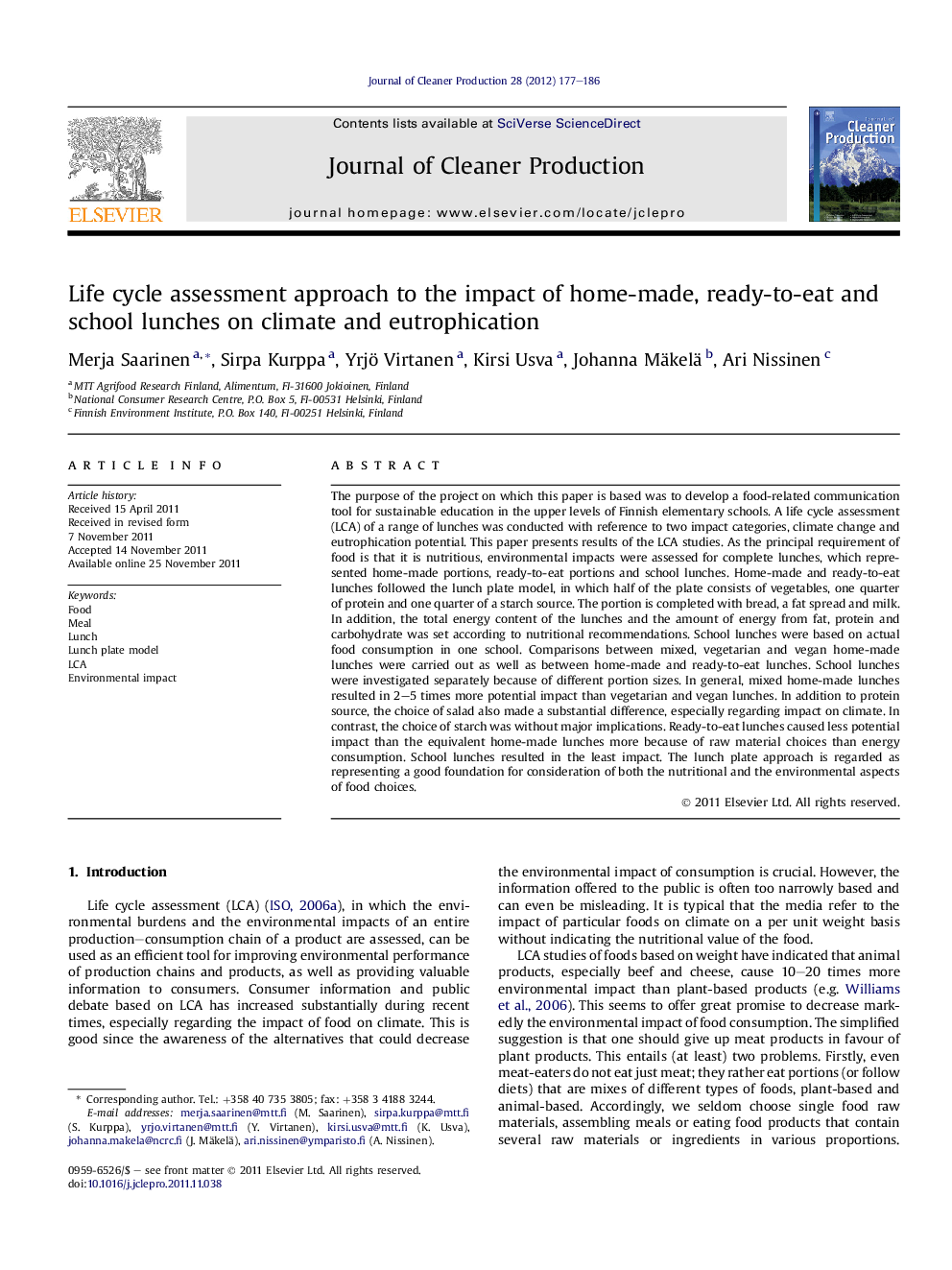| کد مقاله | کد نشریه | سال انتشار | مقاله انگلیسی | نسخه تمام متن |
|---|---|---|---|---|
| 1745726 | 1522217 | 2012 | 10 صفحه PDF | دانلود رایگان |

The purpose of the project on which this paper is based was to develop a food-related communication tool for sustainable education in the upper levels of Finnish elementary schools. A life cycle assessment (LCA) of a range of lunches was conducted with reference to two impact categories, climate change and eutrophication potential. This paper presents results of the LCA studies. As the principal requirement of food is that it is nutritious, environmental impacts were assessed for complete lunches, which represented home-made portions, ready-to-eat portions and school lunches. Home-made and ready-to-eat lunches followed the lunch plate model, in which half of the plate consists of vegetables, one quarter of protein and one quarter of a starch source. The portion is completed with bread, a fat spread and milk. In addition, the total energy content of the lunches and the amount of energy from fat, protein and carbohydrate was set according to nutritional recommendations. School lunches were based on actual food consumption in one school. Comparisons between mixed, vegetarian and vegan home-made lunches were carried out as well as between home-made and ready-to-eat lunches. School lunches were investigated separately because of different portion sizes. In general, mixed home-made lunches resulted in 2–5 times more potential impact than vegetarian and vegan lunches. In addition to protein source, the choice of salad also made a substantial difference, especially regarding impact on climate. In contrast, the choice of starch was without major implications. Ready-to-eat lunches caused less potential impact than the equivalent home-made lunches more because of raw material choices than energy consumption. School lunches resulted in the least impact. The lunch plate approach is regarded as representing a good foundation for consideration of both the nutritional and the environmental aspects of food choices.
Journal: Journal of Cleaner Production - Volume 28, June 2012, Pages 177–186